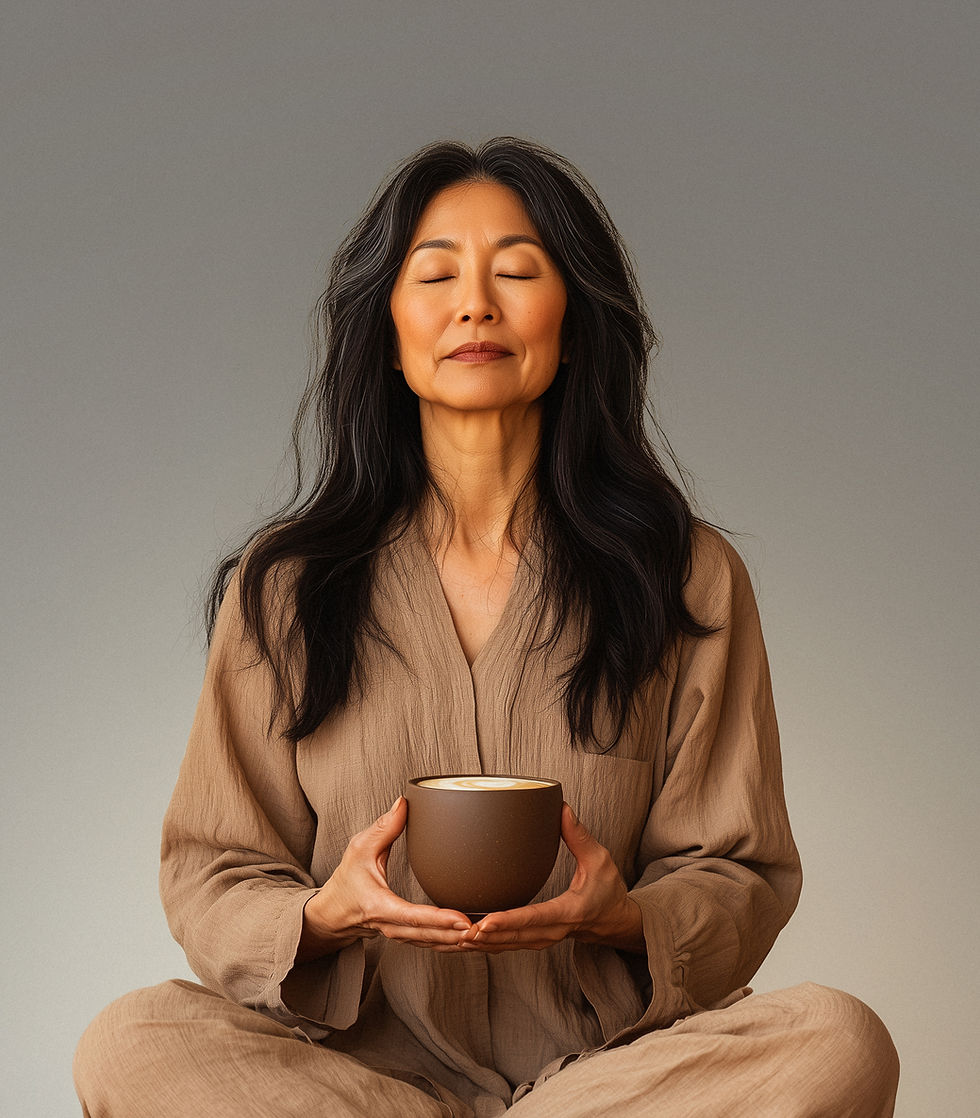Are You Avoiding Discomfort? Here's Why It Matters
- Vanessa Greenwald
- May 12
- 3 min read
Breathe...
Why Avoiding Discomfort Might Be Hurting More Than Helping
Let’s be real—no one wants to feel things like fear, anxiety, sadness, or anger. Those emotions aren’t exactly fun, and if you’ve ever tried to avoid them, you’re not alone. I’ve been there too—staying busy, brushing things off, or distracting myself with a Netflix binge or having a glass of wine… or two. It feels easier at the moment, right?
But here’s something I’ve learned (sometimes, the hard way): avoiding discomfort doesn’t actually make it go away. In fact, it can quietly make things harder over time.

So, What Is Emotional Avoidance?
Emotional avoidance is basically our brain’s way of saying, “Nope, not dealing with that right now.” It’s the internal flinch when something feels too heavy or too painful. And, it can show up in a bunch of ways—some of which might look pretty harmless on the surface:
Pushing feelings down and pretending they’re not there.
Filling every minute with tasks so we don’t have time to think.
Avoiding people or situations that might stir things up.
Numbing out with food, alcohol, social media, or endless to-do lists.
Not going to lie, I’ve done ALL of these! These habits might give us a break in the short term. But they don’t actually fix the root of what we’re feeling—they just press the pause button. Eventually, those feelings come knocking again, often louder than before. The worst is when they make themselves known in the most inopportune moments. Like when you eviscerate someone verbally and when you're done, you look and everyone is looking at you like YOU’RE the one with eight heads. Yup, been there too. Or worst, those feelings can come knocking in the form of a heart attack, a splitting heading, a panic attack, etc.
What Happens When We Keep Avoiding Our Emotions?
Here’s the tricky part: when we don’t deal with our emotions, they don’t just disappear. They tend to stick around under the surface, waiting for a moment to bubble up—sometimes when we least expect it.
Here’s what emotional avoidance can lead to:
Emotions Build Up: Suppressed feelings don’t vanish—they gather weight. And when they finally resurface, it’s often with even more intensity.
It Gets Tougher to Cope: When we always avoid, we don’t get the chance to build healthy emotional tools. It’s like skipping the training and then trying to run a marathon.
Relationships Can Suffer: If we’re out of touch with our own emotions, it’s hard to connect deeply with others. Emotional distance can cause misunderstandings or conflict.
Our Mental Health Takes a Hit: Avoidance has been linked to higher anxiety, depression, and chronic stress. It can block the self-reflection we need for healing and growth.
A Healthier Approach: Emotional Awareness & Acceptance
The good news? There is another way. We can learn to meet our emotions with a little more curiosity, patience, and kindness. It's not always easy—but it is possible.
Here are a few ways to start:
BREATHE, Be Mindful, Not Reactive: Mindfulness doesn’t mean you have to meditate for an hour. It just means noticing what you’re feeling, without judging it or trying to push it away.
Let It Out: Talk to someone you trust. Journal. Paint. Move. Emotions need motion. Emotions are literally energy in motion. Giving them an outlet helps them move through you and your body instead of getting stuck and causing diseases and even more chaos.
Treat Yourself with Compassion: This one’s big. Speak to yourself like you would to a friend. You're human. You’re allowed to feel whatever it is you are feeling. Yup, I mean those scary feelings like wanting to choke someone! It’s natural. You're allowed to struggle—and grow. Stop judging yourself. The world does that enough… don't you think?!
Avoiding discomfort might feel like a quick fix, but over time, it can weigh us down more than we realize. The real strength comes from showing up for yourself—even when it’s messy, even when it’s hard. When we stop running from our emotions and start gently listening to them, we create space for healing, clarity, and connection.
So the next time discomfort shows up… what if you didn’t shut the door or judge the hell out of it or yourself? What if you let it sit with you for a moment—and just breathed?



Comments